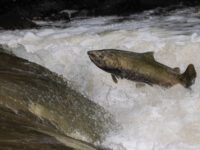Since the beginning of October, five new light brown apple moths (LBAMs) have been found in Sonoma and two in Napa, all in the Carneros region near the area currently quarantined. “There’s a little bit of concern,” said Sonoma County Deputy Agriculture Commissioner Stephan Parnay, “and one possible reason could be because the moths are at the height of their flight at this time, or there could be a small infestation down there. We just don’t know for sure.”
The 19-square-mile area currently under quarantine will be expanded as a result, he said, but the exact new boundary is not yet known. A lot of the new area will be in the southern part, which is not heavily agricultural and goes into a slough. Whether that vegetation is particularly appealing to the LBAM, he did not know, but one of the concerns he said, is that the LBAM has so many hosts.
As to the nature of the cluster, whether it means there is a thriving infestation developing or just a few traveling in on the wind, again, that is unknown. “I have heard, though,” he said, “that they’re blowing in from Mare Island into other adjacent counties. And any new find is not a good thing. The big question is whether they’re flying in or blowing in or establishing an infestation.”
The good news is that the quarantine area in the Sonoma area has been lifted, there having been no recurrences of LBAMs there. However, since the county still has a quarantine in effect – the Carneros region quarantine – the federal quarantine will remain in place.
United States Department of Agriculture (USDA) Regional Public Affairs Officer Larry Hawkins explained, “The state quarantines a smaller area, [and] the restrictions are pretty much the same. The fed probably won’t change as the county was already under quarantine and that regulates interstate shipment or shipment for folks who are exporting out of the country.” He said he did not know of any treatment plans at this time.
Jay Van Rein, a spokesman for the California Department of Food and Agriculture, said there is no plan for treatment at this time. “At this point, we’re close to having an EIR draft out,” he said. “This will review the whole project, everything from traps to twist ties and aerial spraying.”
Light Brown Apple Moth update: good news and bad
More from What's HappeningMore posts in What's Happening »
- Cartoon by Hillary: “Finally We Do Thanksgiving…My Way”
- Permit Sonoma Recommends Decertification of the SDC Specific Plan Environmental Report and Abandoning the SDC Specific Plan
- Chinook Salmon Spotted in Valley Creeks
- Lighted Tractor Parade Set for November 30 on Sonoma Plaza
- Creative Sonoma Announces #TeachTheArts Campaign to Boost Local Teaching Workforce
- The Living Legacy of Mac McQuown






